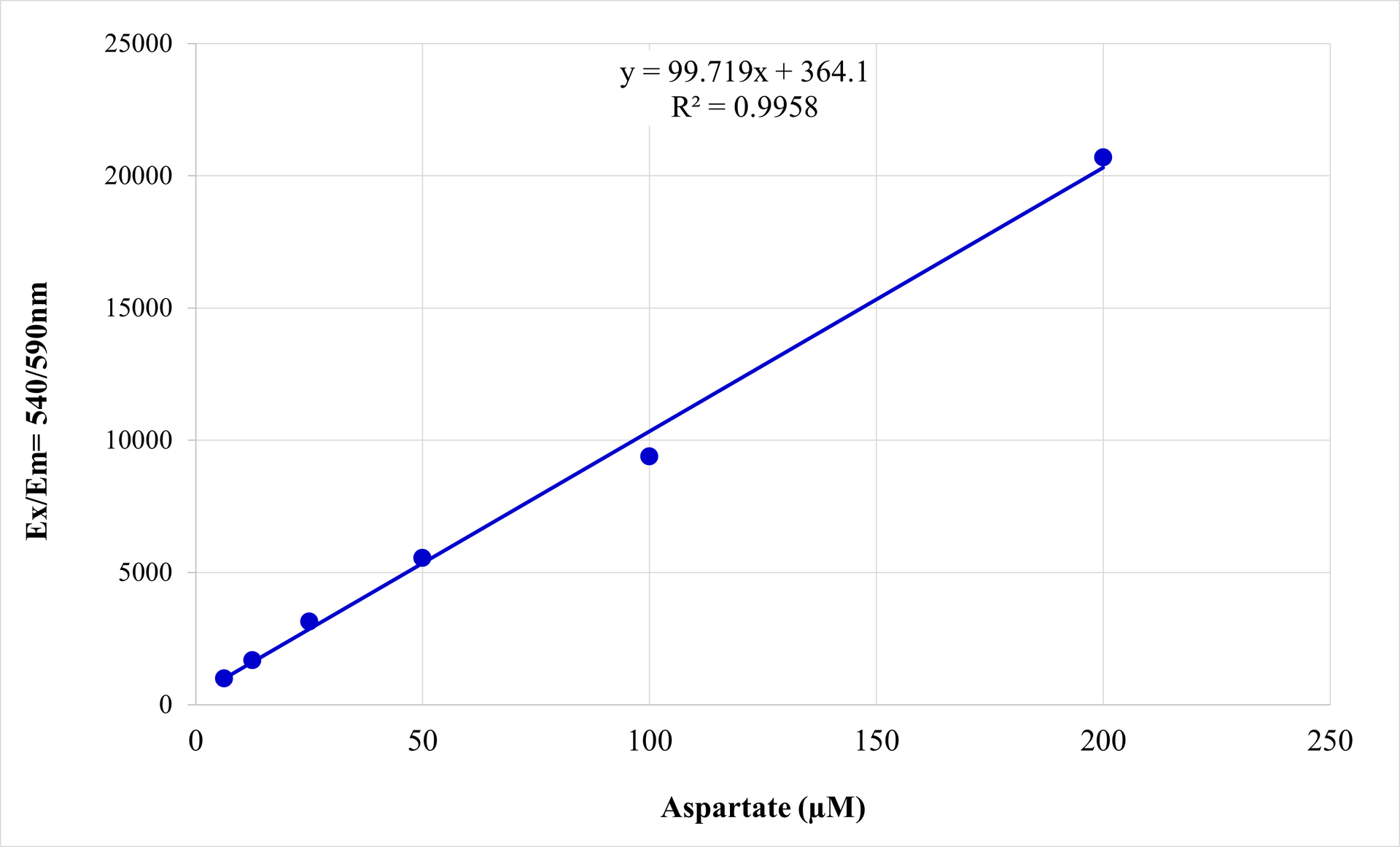The Amplite® Fluorimetric Asparaginase Activity Assay Kit provides a simple and straightforward procedure for measuring Asparaginase activity in a variety of biological samples. Asparaginase activity is determined by a coupled enzyme assay, which results in the formation of a fluorogenic product with Ex/Em=540/590nm. The amount of the fluorogenic product formed is proportional to the aspartate generated by asparaginase enzyme. 1 unit (U) is the amount of enzyme that catalyzes the reaction of 1 µmol of substrate per minute. Asparaginase is an essential enzyme that catalyzes the hydrolysis of the non-essential amino acid asparagine to aspartate and ammonia. It plays a crucial role in cellular functions, particularly in hematopoietic cells which rely on exogenous asparagine for protein synthesis. Asparaginase is found in plants, microorganisms, and certain animals, but does not occur naturally in humans, making it a valuable therapeutic agent in medicine and an essential tool in various industries. Asparaginase is used to treat acute lymphocytic leukemia (ALL) by starving tumor cells of needed nutrients and slowing tumor cell growth. Depletion of circulating asparagine by asparaginase induces cell cycle arrest and apoptosis in malignant cells, offering a targeted approach to cancer treatment. Beyond its medical applications, asparaginase is also used in the food industry to reduce the formation of acrylamide, a potentially carcinogenic compound, in starchy and fried foods. The versatility of this enzyme extends to various research fields, including biotechnology and biochemistry.


| Catalog | Size | Price | Quantity |
|---|---|---|---|
| 11799 | 100 Tests | Price |
| H-phrase | H303, H313, H333 |
| Hazard symbol | XN |
| Intended use | Research Use Only (RUO) |
| R-phrase | R20, R21, R22 |
| Storage | Freeze (< -15 °C); Minimize light exposure |
| UNSPSC | 12352200 |
| Fluorescence microplate reader | |
| Excitation | 540 nm |
| Emission | 590 nm |
| Cutoff | 570 nm |
| Recommended plate | Solid black |
| Telephone | |
| Fax | |
| sales@aatbio.com | |
| International | See distributors |
| Bulk request | Inquire |
| Custom size | Inquire |
| Technical Support | Contact us |
| Request quotation | Request |
| Purchase order | Send to sales@aatbio.com |
| Shipping | Standard overnight for United States, inquire for international |
